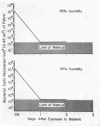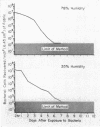Abstract
The persistence of Staphylococcus aureus (Smith) on wool blanket, wool gabardine, cotton sheeting, cotton knit jersey, cotton terry cloth, and cotton wash-and-wear fabrics was studied. The fabrics were exposed to bacterial populations by three methods: direct contact, aerosol, and a lyophilized mixture of bacteria and dust having a high content of textile fibers. The contaminated fabrics were held in 35 or 78% relative humidities at 25 C. In general, the persistence time of S. aureus populations on fabrics held in 35% relative humidity was substantially longer when the fabrics were contaminated by exposure to aerosolized cultures or to dust containing bacteria than when contaminated by direct contact. In a 78% relative humidity, bacterial populations on the fabrics persisted for substantially shorter periods of time regardless of the mode of contamination or fabric type. Cotton wash-and-wear fabric (treated with a modified triazone resin) was the material on which populations of S. aureus persisted for the shortest time. This organism retained its virulence for Swiss mice after being recovered from wool gabardine swatches held 4 weeks in 35% relative humidity and 6 weeks in 78% relative humidity.
Full text
PDF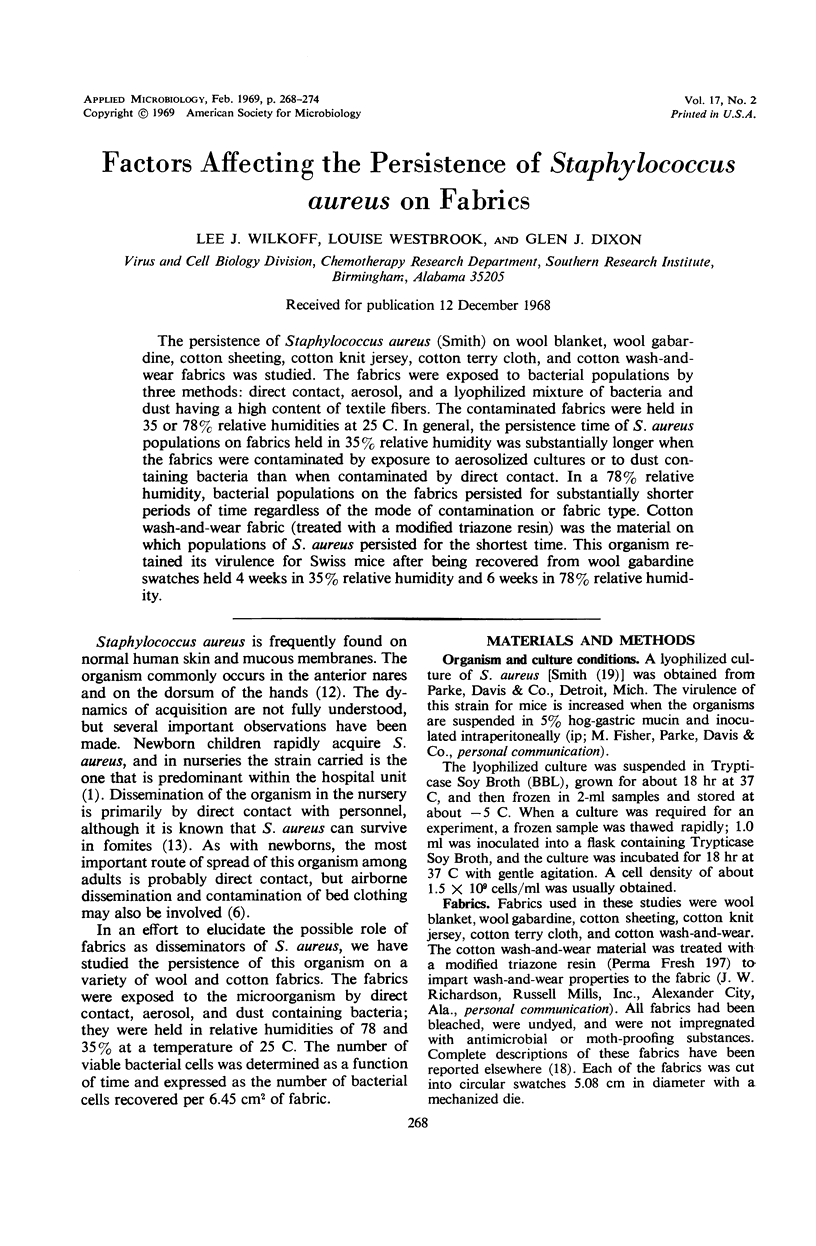
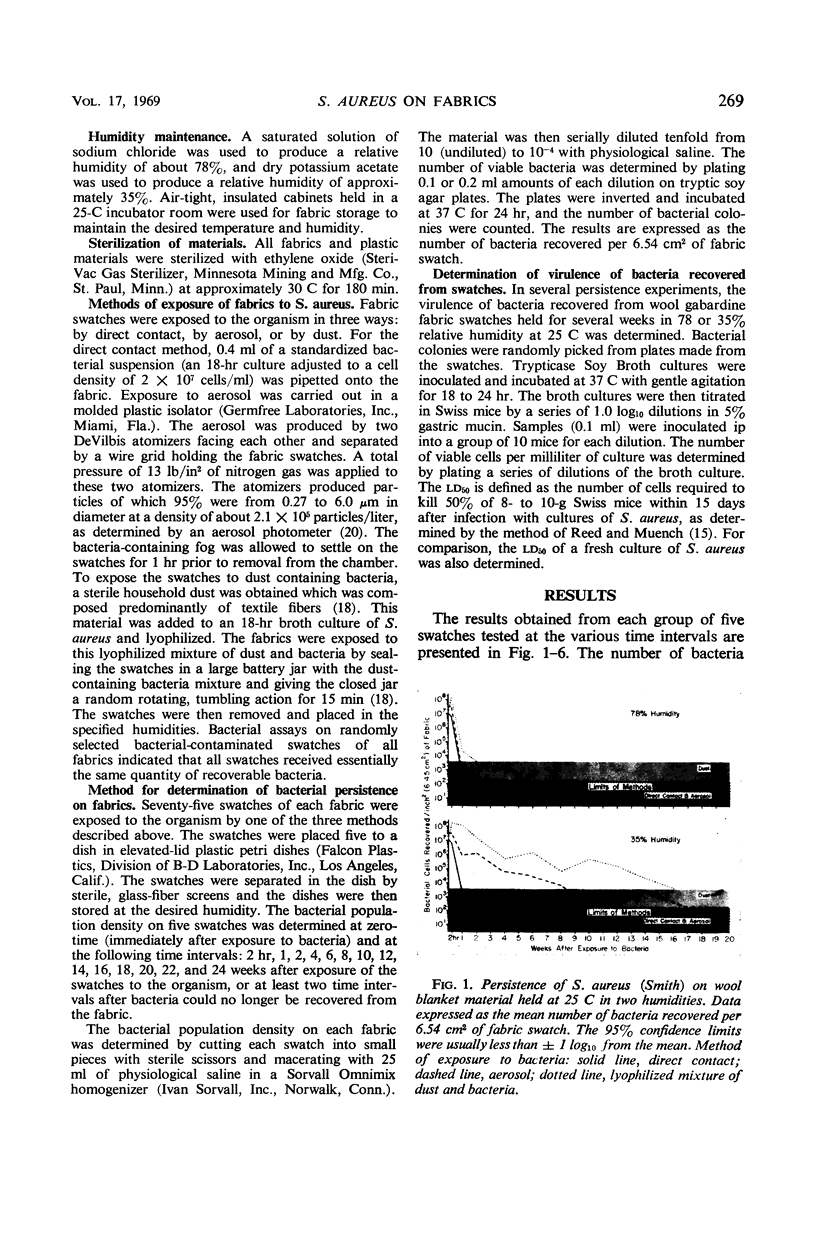
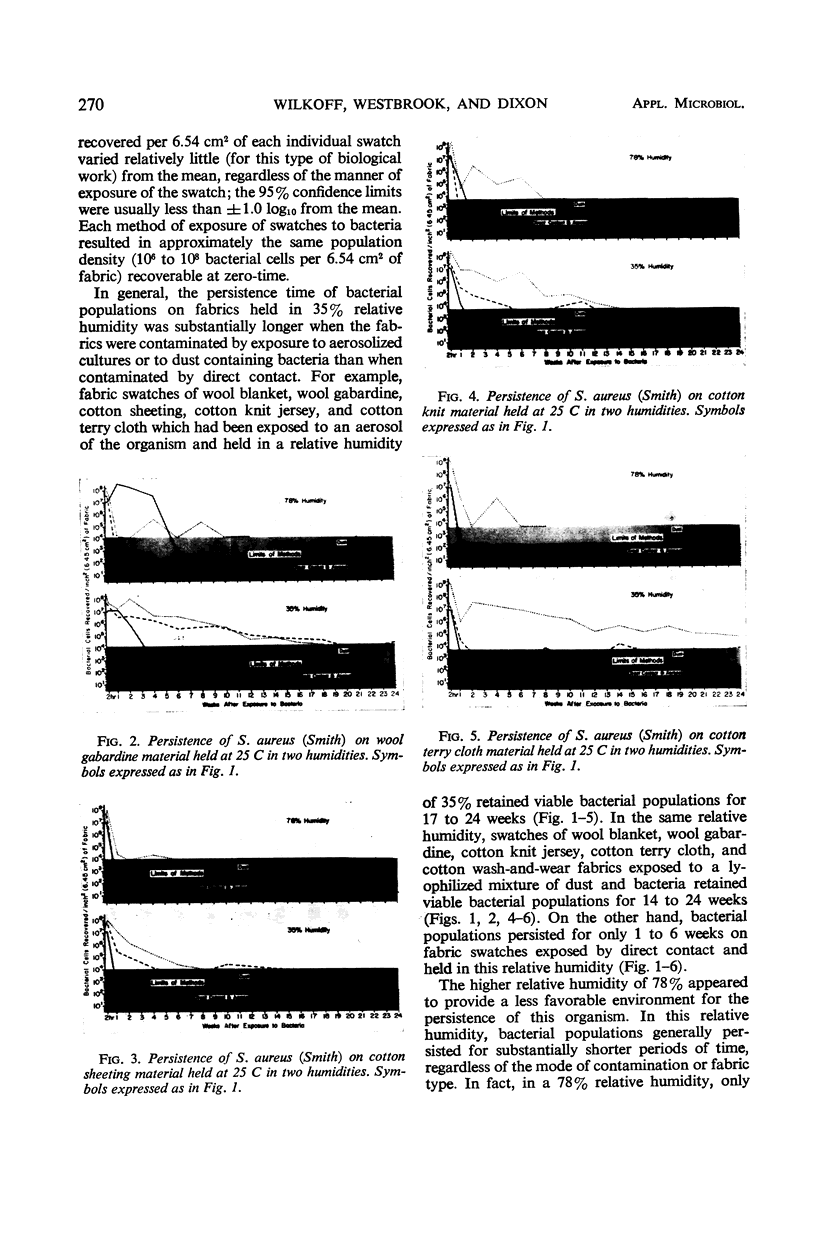
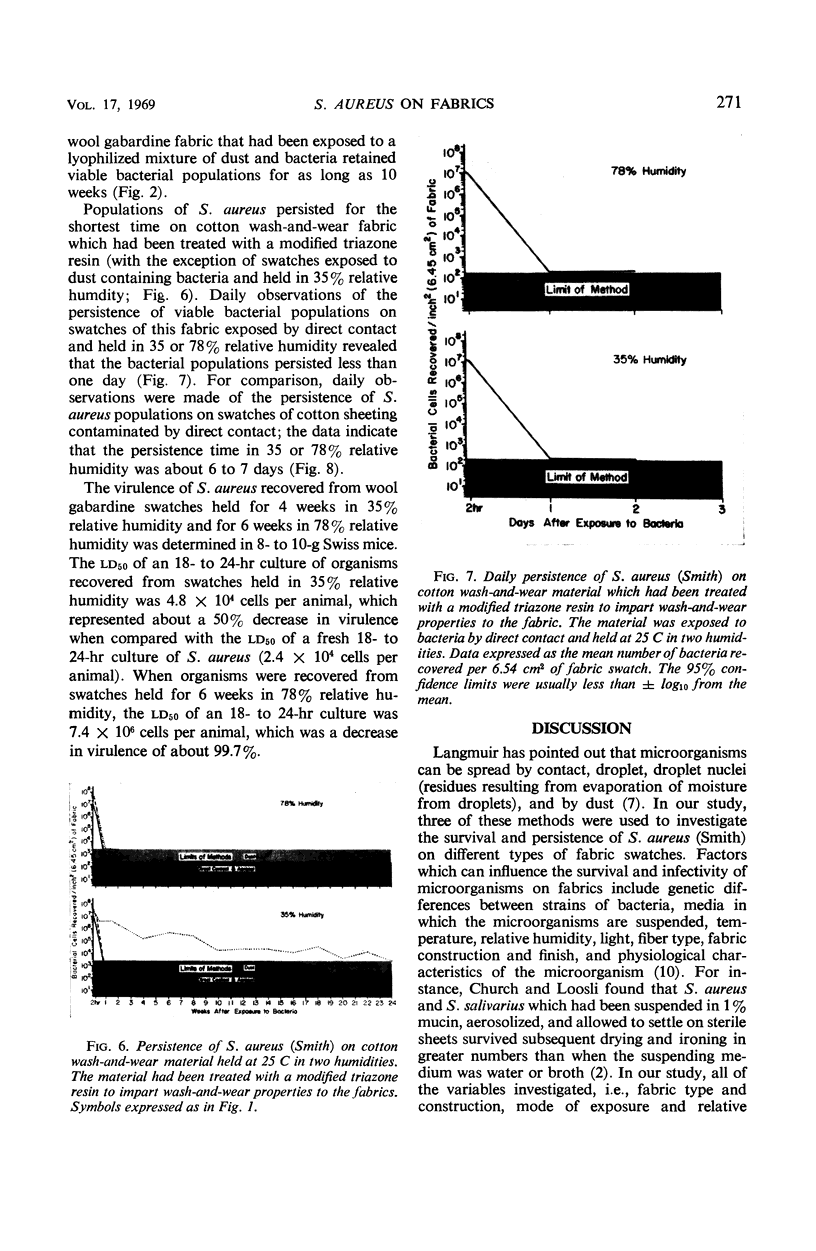
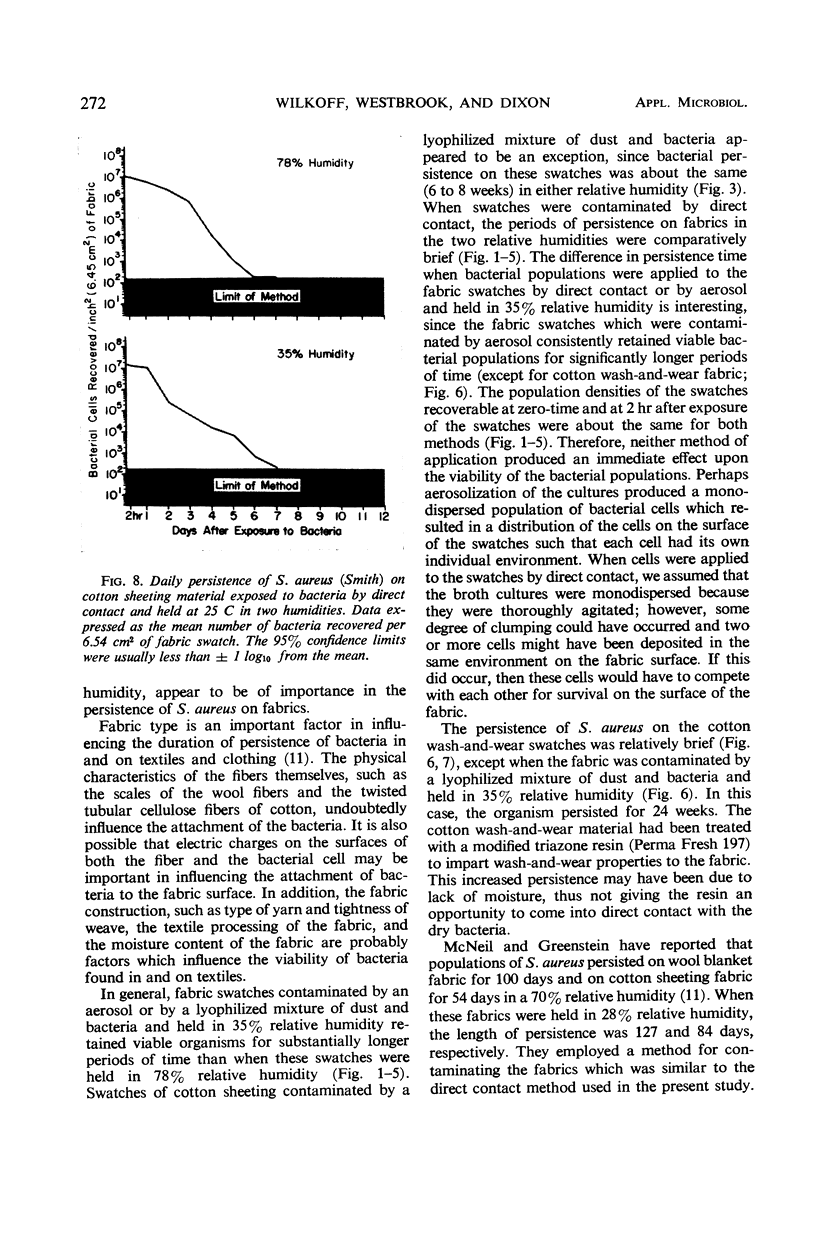
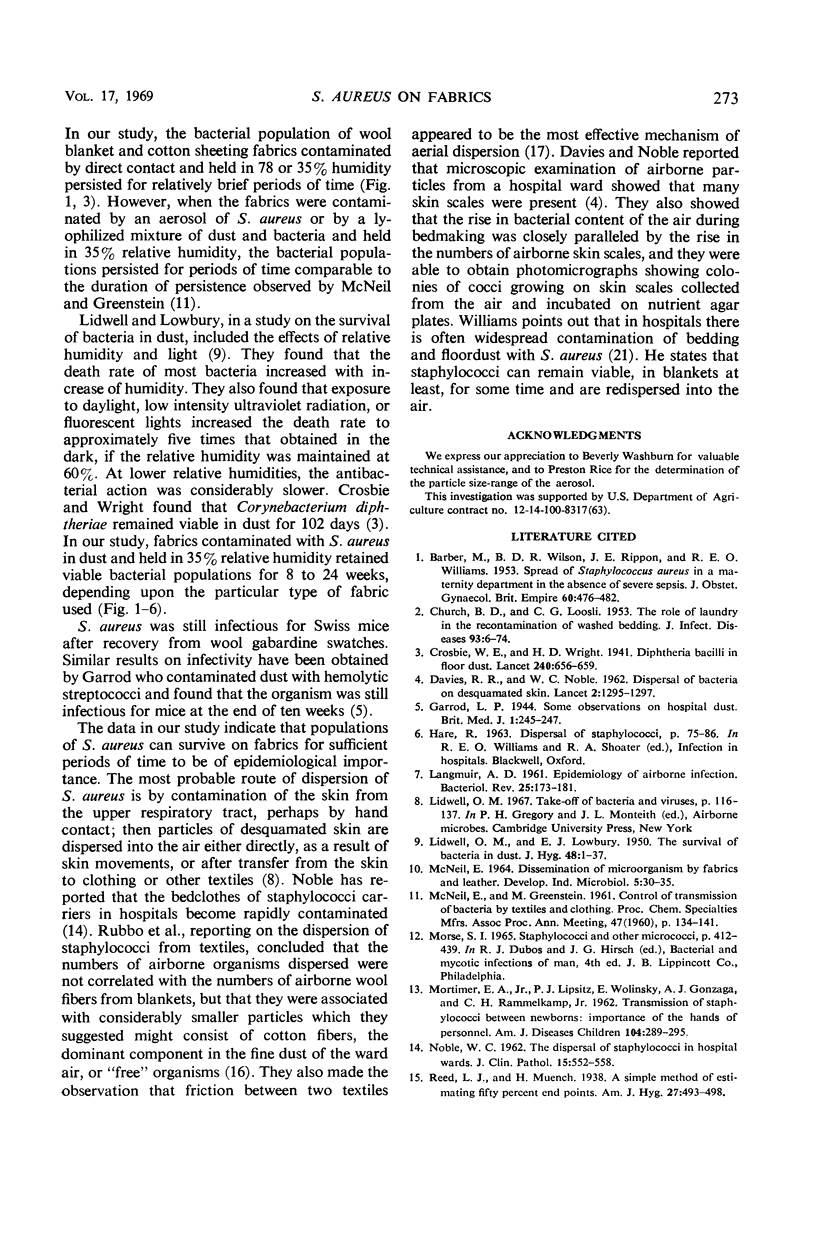
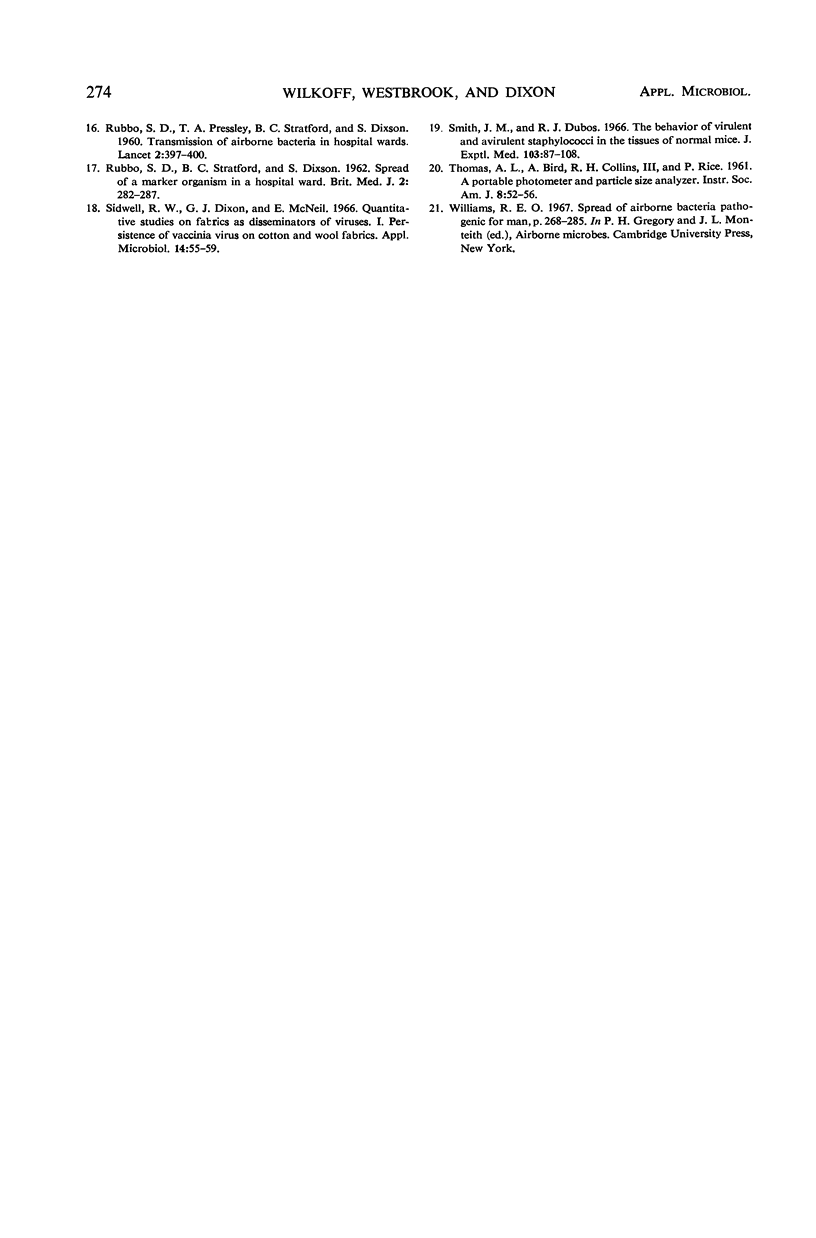
Images in this article
Selected References
These references are in PubMed. This may not be the complete list of references from this article.
- BARBER M., WILSON B. D., RIPPON J. E., WILLIAMS R. E. Spread of Staphylococcus aureus in a maternity department in the absence of severe sepsis. J Obstet Gynaecol Br Emp. 1953 Aug;60(4):476–482. doi: 10.1111/j.1471-0528.1953.tb07223.x. [DOI] [PubMed] [Google Scholar]
- CHURCH B. D., LOOSLI C. G. The role of the laundry in the recontamination of washed bedding. J Infect Dis. 1953 Jul-Aug;93(1):65–74. doi: 10.1093/infdis/93.1.65. [DOI] [PubMed] [Google Scholar]
- DAVIES R. R., NOBLE W. C. Dispersal of bacteria on desquamated skin. Lancet. 1962 Dec 22;2(7269):1295–1297. doi: 10.1016/s0140-6736(62)90849-8. [DOI] [PubMed] [Google Scholar]
- LANGMUIR A. D. Epidemiology of airborne infection. Bacteriol Rev. 1961 Sep;25:173–181. doi: 10.1128/br.25.3.173-181.1961. [DOI] [PMC free article] [PubMed] [Google Scholar]
- MORTIMER E. A., Jr, LIPSITZ P. J., WOLINSKY E., GONZAGA A. J., RAMMELKAMP C. H., Jr Transmission of staphylococci between newborns. Importance of the hands to personnel. Am J Dis Child. 1962 Sep;104:289–295. doi: 10.1001/archpedi.1962.02080030291012. [DOI] [PubMed] [Google Scholar]
- Noble W. C. The dispersal of staphylococci in hospital wards. J Clin Pathol. 1962 Nov;15(6):552–558. doi: 10.1136/jcp.15.6.552. [DOI] [PMC free article] [PubMed] [Google Scholar]
- RUBBO S. D., PRESSLEY T. A., STRATFORD B. C., DIXON S. Vehicles of transmission of airborne bacteria in hospital wards. Lancet. 1960 Aug 20;2(7147):397–400. doi: 10.1016/s0140-6736(60)92840-3. [DOI] [PubMed] [Google Scholar]
- RUBBO S. D., STRATFORD B. C., DIXSON S. Spread of a marker organism in a hospital ward. Br Med J. 1962 Aug 4;2(5300):282–287. doi: 10.1136/bmj.2.5300.282. [DOI] [PMC free article] [PubMed] [Google Scholar]
- SMITH J. M., DUBOS R. J. The behavior of virulent and avirulent staphylococci in the tissues of normal mice. J Exp Med. 1956 Jan 1;103(1):87–108. doi: 10.1084/jem.103.1.87. [DOI] [PMC free article] [PubMed] [Google Scholar]
- Sidwell R. W., Dixon G. J., McNeil E. Quantitative studies on fabrics as disseminators of viruses. I. Persistence of vaccinia virus on cotton and wool fabrics. Appl Microbiol. 1966 Jan;14(1):55–59. doi: 10.1128/am.14.1.55-59.1966. [DOI] [PMC free article] [PubMed] [Google Scholar]








